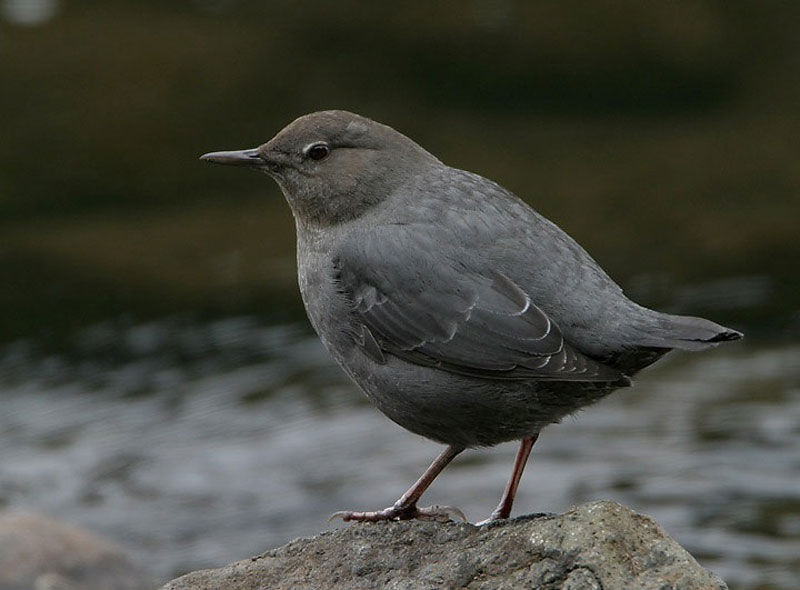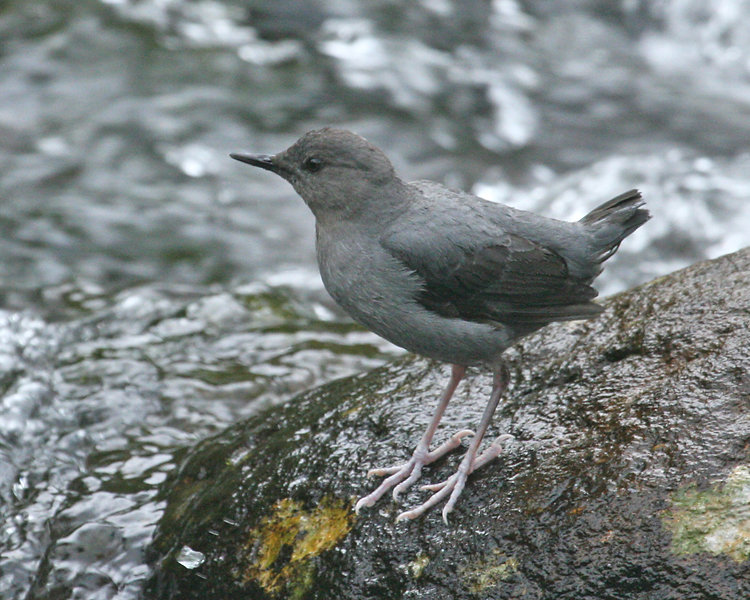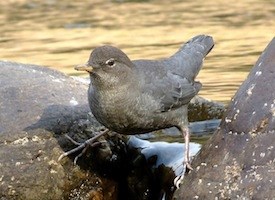
Cinclus mexicanus
TAXONOMY
Cinclus mexicanus Swainson, 1827, Temescaltepic, Mexico.
OTHER COMMON NAMES
English: Mexican dipper, water ouzel, waterthrush; French:
Cincle d’Amйrique, cincle amйricain; German: Grauwasseramsel;
Spanish: Cinclo Norteamericano.
PHYSICAL CHARACTERISTICS
6–7 in (15–17.5 cm); weight, male 2.0–2.3 oz (57–66 g); female,
1.5–2.3 oz (43–65 g). Plumage overall dark gray, paler on chin.
DISTRIBUTION
Western North America from Alaska (north to the Arctic Circle)
and east Aleutians, south through western Canada to Arizona
and Colorado; numerous disjunct populations from
Mexico through Central America to Panama.
HABITAT
Rushing mountain streams; in winter also the fringes of lakes
and beaver ponds, sometimes sea-shores. Sea-level in north to
11,000 ft (3,500 m); in Costa Rica 2,600–8,200 ft (800–2,500 m).
BEHAVIOR
Very similar to Eurasian dipper; dives into and swims in fastflowing
water, usually to be seen perched on a mid-stream
boulder or flying low above the water. Song is a medley of single
notes, audible for long distances; call a sharp “dzik.”
FEEDING ECOLOGY AND DIET
Most food is taken from boulders or stream-beds. Birds usually
only remain submerged for 10 seconds or less. Prey almost entirely
aquatic invertebrates. Will occasionally fly-catch; has
been seen to pick frozen insects off stream-side snowbanks and
beach-hoppers out of cast-up seaweed.
REPRODUCTIVE BIOLOGY
Nest is a spherical or elliptical ball with a side entrance, the
outer layer grass or moss, inside a woven cup of grass, leaves
and bark, usually located near or above flowing water in rock
crevices; also, increasingly, in artificial sites such as bridges or
nest boxes. Both sexes build. Eggs white, in North America
usually four or five, in Costa Rica two to four. Incubation by
female alone, 14–17 days, young fed by both sexes, 24–26 days.
Sometimes double-brooded. Usually monogamous; males may,
rarely, be polygamous.
CONSERVATION STATUS
Not threatened. Frequently common in pristine habitat but
susceptible to water pollution from activities such as mining.
Some populations apparently augmented by provision of nest
sites such as bridges or suitable nest boxes.
SIGNIFICANCE TO HUMANS
Occasionally accused of causing significant damage to fish
hatcheries; otherwise no other direct economic significance.
Other popular Animals
Photo Gallery of - American dipper




 Animalia Life
Animalia Life